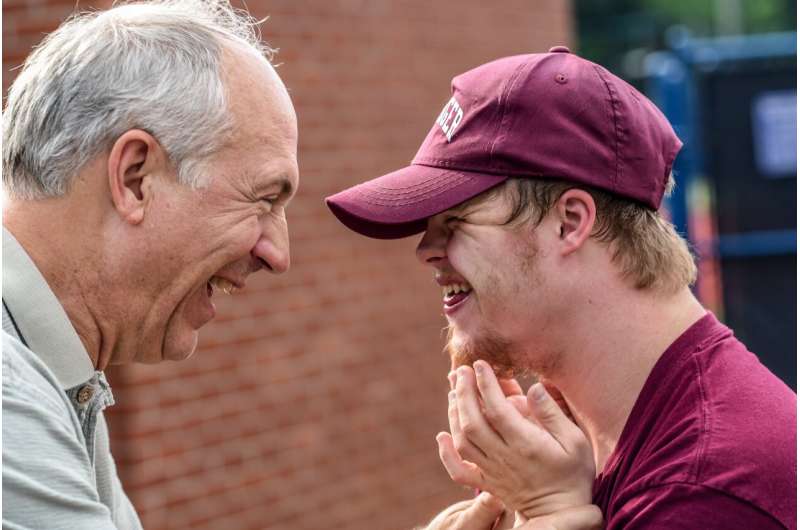
As researchers learn more about COVID-19, it has become increasingly clear that certain groups, including those who have diabetes or obesity, are at higher risk of severe illness if they become infected with the virus.
But there is another vulnerable population that needs to take extra precautions to stay safe during the pandemic—those with Down syndrome.
In October 2020, a large study out of the United Kingdom in the Annals of Internal Medicine showed that people with Down syndrome who get COVID-19 are four times more likely to be hospitalized—and 10 times more likely to die—than the general population. Additional studies have backed up these findings for those with the genetic disorder, which is also known as trisomy 21 and is caused when abnormal cell division creates an extra chromosome.
Michele Spencer-Manzon, MD, a Yale Medicine clinical geneticist, says the heightened risk for Down syndrome patients is not surprising, and that she and her colleagues have been counseling families on the importance of taking extra precautions to avoid infection.
Still, she urges caution when interpreting the study results.
“The study was largely on adults and not kids, and it’s not really clear that what is true for the adult population is true for the pediatric population,” says Dr. Spencer-Manzon. “We have a robust clinic, and we have been fortunate enough to have not yet heard of any of our pediatric patients coming in with severe COVID symptoms, and we are treating them like any other high-risk group.”
The Centers for Disease Control and Prevention (CDC) updated its guidelines in December to include those with Down syndrome in the category of increased risk for severe COVID-19 disease. This means they may be given priority for early vaccination, though specifics vary by state. In Connecticut, for example, the governor recently announced a change in vaccination policy that prioritizes teachers and organizes phases by age.
Reasons for increased risk unclear
Researchers aren’t sure why those with Down syndrome are more vulnerable to severe COVID-19, but they suspect it may have something to do with background immune abnormalities. Plus, the typical anatomy of someone with Down syndrome—large tongues, tonsils and adenoids; small jaws; and lax throat muscle tone—makes them more susceptible to higher rates of respiratory infections in general, experts believe.
“Down syndrome patients can have higher rates of respiratory problems, which is why we monitor them closely when they have a respiratory illness. And if they have low muscle tone, there can be increased risk of aspiration and reflux, which can then further raise the risk of respiratory complications,” Dr. Spencer-Manzon says. “The study was largely on adults and not kids, and it’s not really clear that what is true for the adult population is true for the pediatric population.”
Regardless, it’s important that those with Down syndrome—and anyone who is at increased risk of COVID-19 severity—take certain steps, Dr. Spencer-Manzon adds.
“With Down syndrome, there is a huge spectrum of related health issues. But many of them are issues that the general American public also faces,” she says. “The message we want families to hear is that you should go to the doctor as soon as you start to notice COVID-19 symptoms. You should always be getting enough rest. You should stay well-hydrated. You should eat a healthy diet and maintain a healthy weight. Patients with Down syndrome should be strictly following public health guidelines to lessen their risk of COVID-19.”
Overcoming pandemic obstacles
There are some public health measures that people with Down syndrome may struggle with, including mask-wearing. “Kids with Down syndrome are at higher risk of autism and other sensory sensitivities. Adults, too, can struggle with the tactile stimulation of wearing a mask and being uncomfortable,” Dr. Spencer-Manzon says. “If they can’t wear a mask consistently, our recommendation is that they try to limit social activities outside of their bubble.”
And that brings to mind another piece of advice that isn’t about preventing COVID-19, but handling the repercussions of social distancing.
Source: Read Full Article
